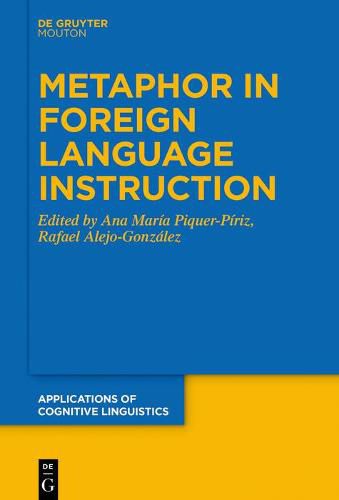Readings Newsletter
Become a Readings Member to make your shopping experience even easier.
Sign in or sign up for free!
You’re not far away from qualifying for FREE standard shipping within Australia
You’ve qualified for FREE standard shipping within Australia
The cart is loading…






Exploring the role that metaphor plays in our linguistic and conceptual systems from a Cognitive Linguistics (CL)-oriented perspective has attracted a great deal of attention for the past three decades. The analysis of the applications of some theoretical tenets of CL (mainly the notion of linguistic motivation) has been particularly fruitful in foreign language (L2) instruction. However, despite some important research findings related to the presentation of word meanings as systematically connected, metaphor is still rarely included as an important part of language courses designed for L2 learners.
This volume explores the important role of metaphor in L2 instruction by presenting both theoretical accounts and empirical studies into the topic. Part I comprises four theoretical chapters that touch upon issues of continuing relevance to the discipline (e.g. why metaphor is relevant for L2 learners and how it can be effectively taught) and introduce areas in need of further research (metaphor in L2 instruction in languages other than English or metaphor and young L2 learners). Part II consists of eight empirical studies that illustrate methodological challenges and best practices when analyzing metaphor in real L2 contexts.
$9.00 standard shipping within Australia
FREE standard shipping within Australia for orders over $100.00
Express & International shipping calculated at checkout
Stock availability can be subject to change without notice. We recommend calling the shop or contacting our online team to check availability of low stock items. Please see our Shopping Online page for more details.
Exploring the role that metaphor plays in our linguistic and conceptual systems from a Cognitive Linguistics (CL)-oriented perspective has attracted a great deal of attention for the past three decades. The analysis of the applications of some theoretical tenets of CL (mainly the notion of linguistic motivation) has been particularly fruitful in foreign language (L2) instruction. However, despite some important research findings related to the presentation of word meanings as systematically connected, metaphor is still rarely included as an important part of language courses designed for L2 learners.
This volume explores the important role of metaphor in L2 instruction by presenting both theoretical accounts and empirical studies into the topic. Part I comprises four theoretical chapters that touch upon issues of continuing relevance to the discipline (e.g. why metaphor is relevant for L2 learners and how it can be effectively taught) and introduce areas in need of further research (metaphor in L2 instruction in languages other than English or metaphor and young L2 learners). Part II consists of eight empirical studies that illustrate methodological challenges and best practices when analyzing metaphor in real L2 contexts.